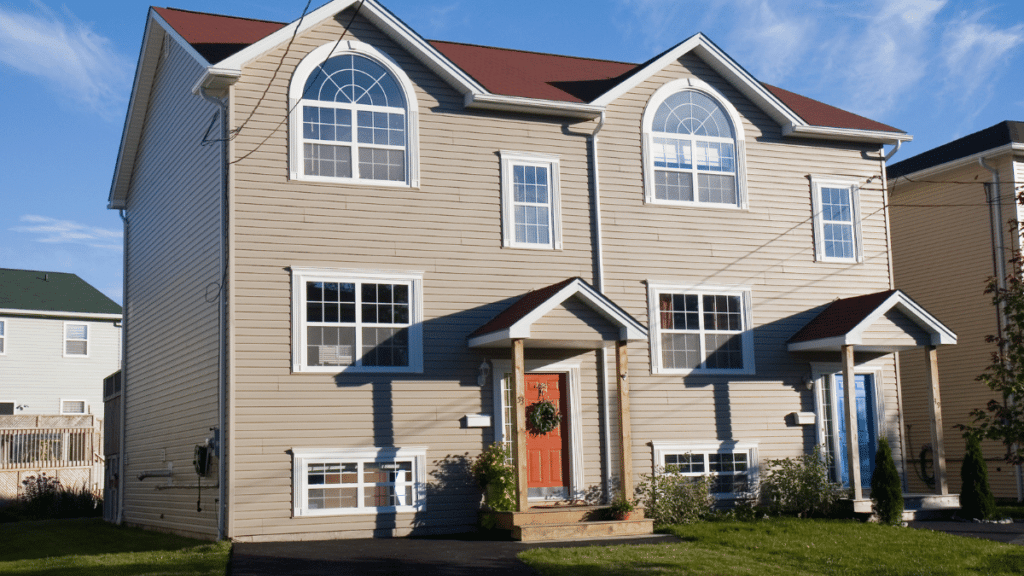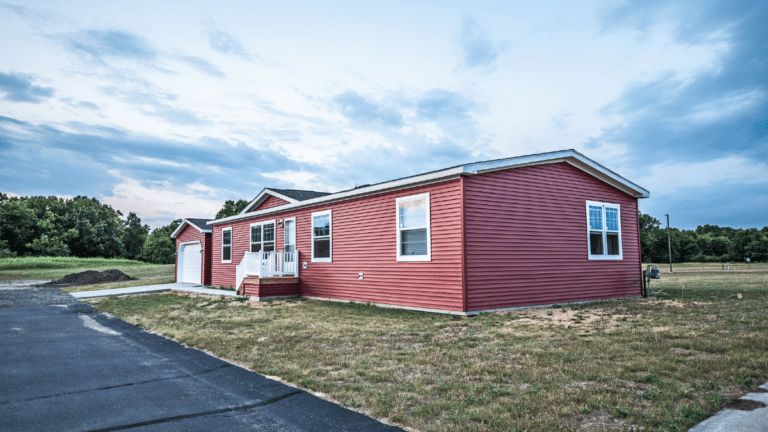If you’re considering diving into the world of property ownership and looking for a way to balance investment with residency, an FHA Multi family Loan might be your ideal solution.
This type of loan is specifically designed for those who plan to live in one unit of a multi-unit property, such as a duplex, triplex, or four-plex, while renting out the others. The key requirement is that you must occupy one of the units as your primary residence for at least 12 months.
In this guide, we’ll explore the ins and outs of FHA Multifamily Loans, highlighting how they can be a smart choice for first-time homebuyers or those seeking to delve into property ownership with an eye towards both personal use and rental income.
Let’s unravel the details to see how this opportunity can fit into your housing and investment plans.
Can You Buy A Multifamily Home With An FHA Loan?
The short answer is yes, but with a crucial condition. An FHA Multifamily Loan allows you to purchase a property with multiple units – like duplexes, triplexes, or four-plexes – under the agreement that you, the buyer, will live in one of the units as your primary residence for at least the first year. This is what differentiates an FHA Multifamily Loan from typical investment property loans.
Key Points to Know:
Owner-Occupancy Requirement: The most critical aspect of an FHA Multifamily Loan is the owner-occupancy rule. You are required to live in one of the units for at least 12 months. This makes the loan ideal for those who are looking to enter the property market both as a homeowner and a landlord.
Types of Properties: The loan covers properties up to four units. Whether it’s a duplex (two units), a triplex (three units), or a four-plex (four units), the loan terms remain consistent, provided the owner-occupancy condition is met.
Loan Benefits: The advantages of FHA loans — lower down payments, lower credit score requirements, and more flexible lending guidelines — apply to multifamily loans as well. This makes them a great option for those who might not qualify for conventional financing.
Rental Income Consideration: While you can use the rental income from the other units to qualify for the loan, there are specific guidelines on how this income is calculated and used in the loan process.
FHA Loan Limits: The loan limits for FHA loans vary depending on the area and the number of units in the property. These limits can affect the total amount you are eligible to borrow.
In essence, an FHA Multifamily Loan offers a unique opportunity to purchase a home while also venturing into property management. It’s an excellent option for those looking to get a start in real estate investment without forgoing the benefits of being a homeowner.
What is An FHA Multifamily Loan?
An FHA Multifamily Loan is a specialized mortgage product offered and backed by the Federal Housing Administration (FHA). It’s designed to facilitate the acquisition of residential properties that feature multiple units, such as duplexes, triplexes, or four-plexes.
The distinctive feature of this loan is the requirement that the borrower must live in one of the units as their primary residence for at least the first 12 months. This key condition sets it apart from conventional investment property loans.
Flexible Loan Terms: Borrowers have the flexibility to select loan terms ranging from 15 to 30 years, allowing them to align the loan with their financial objectives.
Lower Down Payment: One of the notable advantages of these loans is the relatively low down payment requirement, typically as low as 3.5% of the purchase price. This accessibility makes homeownership and property investment more attainable, particularly for first-time buyers.
Credit Score Consideration: While credit scores are taken into account, FHA loans are known for their more lenient credit score requirements. Borrowers with a credit score of 580 or higher can qualify for the minimum down payment.
Rental Income: The potential rental income from the additional units can be factored into the borrower’s qualification process, providing an avenue for meeting income requirements.
Pros and Cons of Using FHA Loans to Buy Multifamily Homes
Considering an FHA loan for the purchase of a multifamily property with up to four units? It’s a smart move, but like any financial decision, weighing the pros and cons is crucial.
Pros:
Easier Approval: FHA loans, backed by the U.S. government, offer a smoother approval process. Lenders are more inclined to provide loans to individuals with past credit challenges, making homeownership accessible to a broader range of buyers.
Lower Credit Score Requirements: FHA loans have a relatively low credit score requirement, with a minimum of 580 or even as low as 500 with a 10% down payment. This is a stark contrast to the typical 620 credit score requirement for conventional loans.
Minimal Down Payment: One of the standout advantages is the low down payment requirement of just 3.5%. Additionally, some state housing financing agencies offer down payment assistance programs, further reducing the upfront cost.
Open to All Applicants: Unlike certain loan types that have specific eligibility criteria (e.g., military service for VA loans or rural location for USDA loans), FHA loans are open to all borrowers. Whether you’re eyeing a property in the heart of the city or a rural oasis, FHA loans are inclusive.
Cons:
Mortgage Insurance Premium (MIP): FHA loans come with MIP, consisting of an upfront payment and ongoing annual premiums. While it enhances loan accessibility, it adds to the long-term borrowing cost.
Stringent Appraisal Process: FHA loans necessitate the use of FHA-approved appraisers, which can be a challenge to locate. Furthermore, FHA appraisal standards tend to be more rigorous compared to conventional loans. This ensures property quality but can lead to a more extensive appraisal process.

FHA Loan for A Duplex, Triplex or Four-Plex
FHA Duplex, Triplex & Fourplex Guidelines
| Property Type | Max Loan-to-Value (LTV) | Minimum Down Payment | Minimum Credit Score | Occupancy Requirement |
| Duplex | Up to 96.5% | 3.5% | 580+ (Lower scores considered) | One unit as primary residence for at least 12 months |
| Triplex | Up to 96.5% | 3.5% | 580+ (Lower scores considered) | One unit as primary residence for at least 12 months |
| Fourplex | Up to 96.5% | 3.5% | 580+ (Lower scores considered) | One unit as primary residence for at least 12 months |
Can I Use Rental Income to Qualify for an FHA Multifamily Loan?
When considering an FHA multifamily loan for a property with multiple units, it’s essential to understand how rental income can be used to qualify, especially if you don’t have a significant rental history for the property. Here’s how it works:
Providing Lease Agreements
If you already have lease agreements in place for the property, you can provide them to the lender. These leases serve as proof of future rental income. It’s essential to share these agreements as they can play a crucial role in demonstrating the property’s revenue potential.
Comparable Rent Schedule
In cases where you don’t have existing lease agreements, your lender will typically order a comparable rent schedule as part of the property appraisal process. An appraiser will estimate the market rent for each unit within the property.
Calculating Rental Income
To determine how much rental income you can use to qualify for the FHA multifamily loan, you’ll generally use the lesser of two options:
- Income Based on Profit and Loss Statement: If provided by the appraiser (commonly using forms like Fannie Mae Form 216 or Freddie Mac Form 998), you can use the rental income based on the property’s profit and loss statement. This statement factors in various operating expenses and revenue, giving a comprehensive view of the property’s income potential.
- 75% of Fair Market Rents or Actual Rents: Alternatively, you can use 75% of the fair market rents (typically determined by the appraiser) or the actual rents, whichever is lower. This ensures that you’re using a conservative estimate of rental income for qualification purposes.
Example Calculation
Let’s consider an example: The appraiser estimates that a unit could rent for $1,000 per month, and it’s currently rented at $800. In this case, you can use 75% of the actual rent, which is $600, for qualification purposes.
Understanding how rental income can be used to qualify for an FHA multifamily loan is vital for borrowers looking to invest in properties with multiple units.
Whether you have lease agreements or rely on market estimates, this information helps ensure that your loan application accurately reflects the property’s income potential.
FHA Self-Sufficency Test
FHA Self-Sufficiency Test for 3- and 4-Unit Properties
When it comes to purchasing a 3- or 4-unit property with an FHA loan, there’s an additional consideration known as the FHA self-sufficiency test. It’s important to note that this test doesn’t apply to duplexes, so if you’re interested in a duplex, you can skip this requirement.
However, for those looking at 3- or 4-unit homes and planning to use an FHA loan, understanding and meeting this test’s criteria is crucial before making an offer.
What Is the FHA Self-Sufficiency Test?
In essence, the FHA self-sufficiency test is designed to determine whether the rental income generated from all units within the property will be sufficient to cover the full mortgage payment. This test ensures that the property is financially viable and won’t put the homeowner in a precarious financial situation.
Passing the Test
To pass the FHA self-sufficiency test, the rental income from all units must meet or exceed the property’s total mortgage payment, including principal, interest, taxes, and insurance (PITI). The idea is to ensure that the property is generating enough income to cover its own expenses, reducing the risk of financial strain on the homeowner.
It’s worth noting that the specific requirements and calculations for the FHA self-sufficiency test can vary, so it’s essential to work closely with your lender and real estate professionals to understand the criteria for your particular property. They can help you evaluate whether the property meets the test’s requirements before you commit to the purchase.
If you’re considering a 3- or 4-unit property with an FHA loan, the FHA self-sufficiency test is a critical consideration. It’s all about ensuring that the property’s rental income can comfortably cover the mortgage expenses, promoting a stable and sustainable investment.
FHA Multifamily Loan FAQ’s
How Do I Apply For A Multifamily Loan?
To apply for an FHA multifamily loan, gather your financial documents, including W-2s, tax returns, and bank statements. Choose a lender experienced in FHA multifamily loans, complete their application, undergo a credit check, and verify your income and assets. Ensure the property undergoes an FHA appraisal and provide fair market rental value assessment if using rental income. Await approval and proceed with closing. Working with an experienced lender is crucial for a smooth application process.
Can you Buy A Duplex With an FHA Loan?
Absolutely, you can use an FHA loan to purchase a duplex. FHA loans are a versatile financing option that allows aspiring homeowners to acquire properties with up to four units, making them perfect for duplex purchases.
Can You Buy A Triplex With An FHA Loan?
Yes, you can buy a triplex with an FHA loan. FHA loans are available for properties with up to four units, including duplexes, triplexes, and four-plexes.
Does FHA require financial reserves on a duplex?
No, FHA does not typically require financial reserves specifically for duplex properties. However, it’s essential to understand that while FHA loans generally have more flexible credit and down payment requirements compared to conventional loans, individual lenders may have their own underwriting guidelines. These guidelines can vary, and some lenders may request financial reserves based on their assessment of the borrower’s creditworthiness and financial situation.
Does FHA Require Financial Reserves for Multi Family?
Here are the reserve requirements for FHA loans based on the number of units:
- For 1-2 unit properties: No reserves are required.
- For 3-4 unit properties: A reserve of three months of principal, interest, taxes, and insurance (PITI) is typically required.
These requirements ensure that borrowers have the necessary financial reserves to cover their housing expenses, especially for multifamily properties with three or four units.
FHA requires financial reserves for 3-4 unit properties, and the standard reserve requirement is three months of principal, interest, taxes, and insurance (PITI).
This means that borrowers who are seeking an FHA loan for a property with three or four units must have the equivalent of three months’ worth of housing expenses (including mortgage payments, property taxes, and insurance) in reserves.














